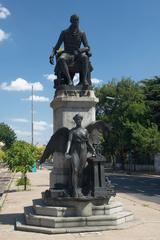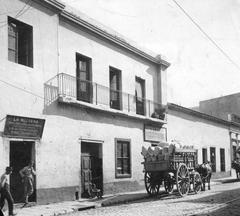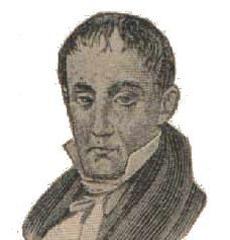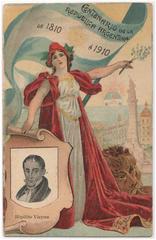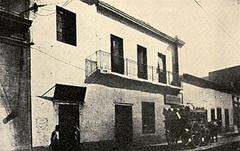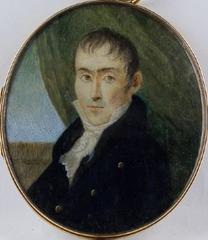
Hipólito Vieytes Buenos Aires Visiting Hours, Tickets, and Historical Significance Guide
Date: 15/06/2025
Introduction: The Legacy of Hipólito Vieytes in Buenos Aires
Buenos Aires is a tapestry of revolutionary history, and few individuals are as integral to its transformation as Hipólito Vieytes (1762–1815). As a trailblazing intellectual, businessman, and political leader, Vieytes was pivotal in the May Revolution and Argentina’s early independence movement. His influence is etched into the city’s urban fabric, from the historic San Telmo neighborhood—home to the legendary Jabonería de Vieytes, the soap factory turned revolutionary meeting place—to the culturally vibrant districts of Barracas and Nueva Pompeya.
This guide is designed for travelers eager to explore Buenos Aires through the lens of Vieytes’ enduring legacy. It provides up-to-date information on visiting hours, ticketing, accessibility, nearby attractions, and practical tips for navigating the city’s most historic quarters. Whether you’re drawn to the colonial charm of San Telmo, the artistic flair of Barracas, or the tango traditions of Nueva Pompeya, this guide ensures a well-informed and memorable visit.
For official updates and event information, visit the Buenos Aires Tourism Office. To delve deeper, consult resources such as Billiken, Wikipedia, and The Collector.
Contents
- Introduction: The Legacy of Hipólito Vieytes
- About Hipólito Vieytes: A Visitor-Friendly Overview
- Planning Your Visit: Locations, Hours, and Tickets
- Key Historical Sites in Buenos Aires: What to See
- Neighborhood Highlights: Barracas, Nueva Pompeya, San Telmo, and Monserrat
- Practical Travel Tips and Cultural Insights
- Annual Events and Commemorations
- Frequently Asked Questions (FAQ)
- Summary and Recommendations
- Sources and Official Links
About Hipólito Vieytes: A Visitor-Friendly Overview
Hipólito Vieytes (1762–1815) was a multifaceted figure: a businessman whose soap factory, the Jabonería de Vieytes, became a clandestine hub for revolutionary leaders; a journalist who published the “Semanario de Agricultura, Industria y Comercio”; and a patriot instrumental in Argentina’s fight for independence. Today, his name graces streets, monuments, and commemorative plaques across Buenos Aires—each telling a story of the city’s transformation from a colonial outpost to a beacon of modernity.
Planning Your Visit: Locations, Hours, and Tickets
Main Historical Sites
-
Jabonería de Vieytes Commemorative Sites (San Telmo/Monserrat):
- Location: México 1050 or corners of Tacuarí and Venezuela or Lima and Venezuela (exact location debated)
- Hours: Public spaces open year-round, 24/7
- Tickets: Free access; guided walking tours available from ARS 1500–3000 (USD 7–15) via local operators
-
Hipólito Vieytes Monument (San Telmo):
- Location: Historic plaza in San Telmo
- Hours: Daily, 8:00 AM–8:00 PM
- Tickets: Free
-
Museo Histórico Nacional:
- Exhibits: Artifacts from the independence era, including items related to Vieytes
- Hours: Tuesday–Sunday, 11:00 AM–6:00 PM
- Tickets: Modest entrance fee; free on select days
-
Calle Hipólito Vieytes (Barracas/Nueva Pompeya):
- Accessibility: Open public street, 24/7
Getting There
- Subway: Line C (San Juan station) for San Telmo/Monserrat
- Bus: Multiple routes connect the city center to San Telmo, Barracas, and Nueva Pompeya
- By Car: Recommended for visiting outlying neighborhoods
Accessibility
- San Telmo: Pedestrian-friendly but with cobblestone streets; wheelchair access at main museums and some cultural centers
- Barracas/Nueva Pompeya: Accessibility varies; main museums and cultural venues offer accommodations
Key Historical Sites in Buenos Aires: What to See
The Jabonería de Vieytes
Once a soap factory, the Jabonería doubled as a secret meeting ground for independence leaders. While the original structure no longer stands, commemorative plaques and guided tours recount its vital role (Billiken). The surrounding San Telmo and Monserrat neighborhoods retain their colonial charm, inviting exploration of their historical streets and cafes.
San Telmo and Monserrat
- San Telmo Market: Antiques, local crafts, and street food (Tuesday–Sunday, 10:00 AM–6:00 PM)
- Plaza Dorrego: Tango performances and weekend fairs—ideal for families and photographers
- Plaza de Mayo/Casa Rosada: Political center of Buenos Aires; free public access, guided Casa Rosada tours available Wednesday–Sunday (Casa Rosada Tickets)
Barracas
- Calle Hipólito Vieytes: Lined with murals and industrial heritage sites
- Usina del Arte: Cultural center with exhibitions, concerts, and guided tours (Usina del Arte Tickets and Hours)
- Santa Felicitas Church: Open 9:00 AM–5:00 PM; donations appreciated
Nueva Pompeya
- Tango Clubs and Milongas: Evening venues; check individual schedules
- Mercado de Pompeya: Daily, 7:00 AM–2:00 PM
- Parque Patricios: Open dawn to dusk
Neighborhood Highlights
Barracas: Industrial Heritage and Urban Renewal
Barracas is renowned for its 19th and early 20th-century factories, many of which have been repurposed as art galleries and studios. The neighborhood’s vibrant street art, especially the “El Regreso de Quinquela” mural, can be explored anytime, though daytime visits are safest.
Nueva Pompeya: Tango and Tradition
Nueva Pompeya’s tango clubs, local markets, and community parks embody Buenos Aires’ living traditions. The area is best visited in the evening for live tango performances or during daytime for its markets.
San Telmo: Bohemian Heart of Buenos Aires
San Telmo’s cobblestone streets, antique shops, and colonial architecture make it a favorite for historical walking tours and cultural immersion.
Monserrat: Political Epicenter
Monserrat is home to Plaza de Mayo, Casa Rosada, and Buenos Aires Metropolitan Cathedral—landmarks pivotal to Argentina’s independence movement.
Practical Travel Tips and Cultural Insights
- Best Time to Visit: Spring (September–November) and autumn (March–May) offer mild weather ideal for walking tours (Journey by Backpack)
- What to Wear: Comfortable shoes for cobblestone streets; layered clothing for variable weather
- Money: Argentine peso (ARS) is standard; cash preferred in smaller venues (secretsofbuenosaires.com)
- Language: Spanish; basic phrases are helpful
- Safety: Petty theft can occur in crowded areas; maintain vigilance, especially in tourist hotspots
Cultural Etiquette:
- Greet with a single cheek kiss (common), or handshake among men
- Late dining hours; lunch typically 12:30–2:30 PM, dinner after 8:30 PM
- Sharing mate is a sign of hospitality
Connectivity:
- Wi-Fi is available in most urban areas; rural or lesser-visited sites may have limited access
Annual Events and Commemorations
- May Revolution Celebrations (May 25): Parades and tributes in San Telmo and Plaza de Mayo honoring revolutionary figures, including Vieytes
- Buenos Aires Tango Festival (August): Tango performances, especially in Nueva Pompeya
- Barracas Art Walks: Seasonal events highlighting local murals and artists
Frequently Asked Questions (FAQ)
Q: Are there entrance fees for Hipólito Vieytes-related sites?
A: Most public monuments and outdoor sites are free. Museum and guided tour fees range from ARS 100–3000, depending on the experience.
Q: Are guided tours available?
A: Yes. Many local companies offer historical tours focusing on Vieytes and related independence sites (Buenos Aires Historical Tours).
Q: What is the best way to reach these sites?
A: Public transport (subway, bus) is reliable for city sites; car rental recommended for outlying areas or rural localities.
Q: Is the area accessible for people with disabilities?
A: Major museums and cultural centers are accessible; street conditions vary, especially in older neighborhoods.
Q: Is the site suitable for children and families?
A: Yes. Open spaces and local markets provide a family-friendly atmosphere.
Summary and Recommendations
Exploring the sites connected to Hipólito Vieytes offers a rare window into Argentina’s revolutionary past and vibrant cultural present. Highlights include:
- Free access to key public monuments and plazas
- Guided tours for deeper historical context
- Accessibility options in main museums and cultural venues
- Seasonal travel tips for comfort and safety
- Proximity to other attractions—Museo Histórico Nacional, Plaza de Mayo, and more
Sources and Official Links
- La Jaboneria de Vieytes: conoce su historia, 2025, Billiken
- Hipólito Vieytes, Wikipedia
- History Lover’s Guide to Buenos Aires, 2025, The Collector
- Buenos Aires Historical Tours, 2025
- Buenos Aires Tourism Office
- Usina del Arte Tickets and Hours
- Casa Rosada Tickets
- Journey by Backpack
- secretsofbuenosaires.com
Images are used with permission and include descriptive alt text for accessibility and SEO.
